Abstract
Restriction analysis shows that wild Scandinavian mice belonging to the species Mus musculus contain the mitochondrial DNA of a neighboring species, M. domesticus. This demonstration results from comparisons of Scandinavian mice with authentic M. domesticus and M. musculus from other parts of Europe. Electrophoretic and immunological analysis of eight diagnostic proteins confirms that mice from north of the hybrid zone in Denmark are M. musculus in regard to their nuclear genes. In contrast, the mice tested from this region and a nearby part of Sweden have exclusively M. domesticus types of mitochondrial DNA. Phylogenetic analysis of the restriction maps suggests that the mitochondrial DNAs found in Scandinavian M. musculus could stem from a single M. domesticus female.
Full text
PDF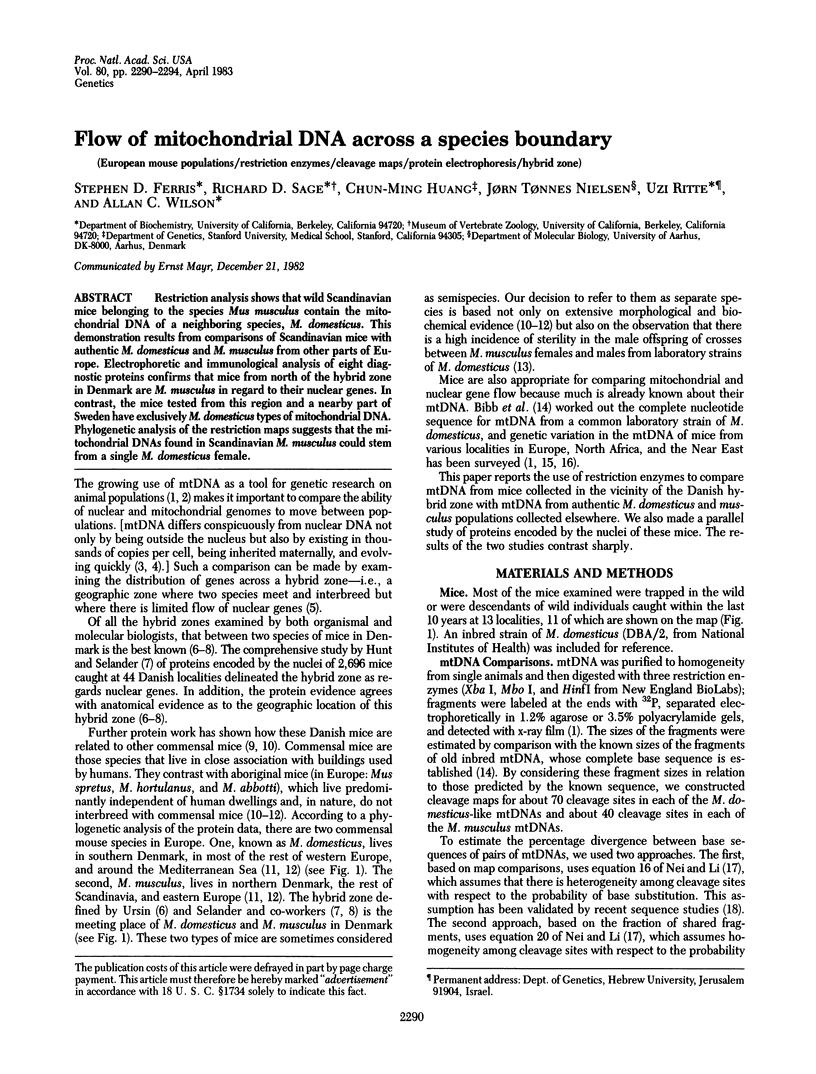
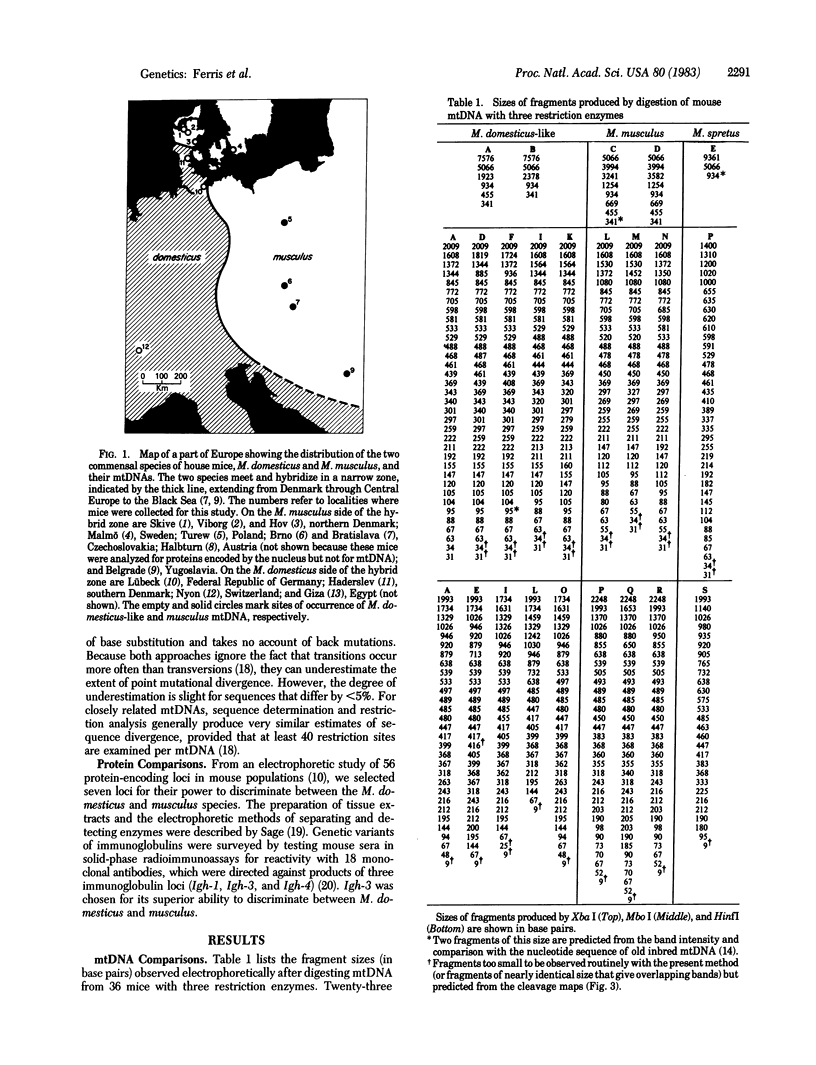
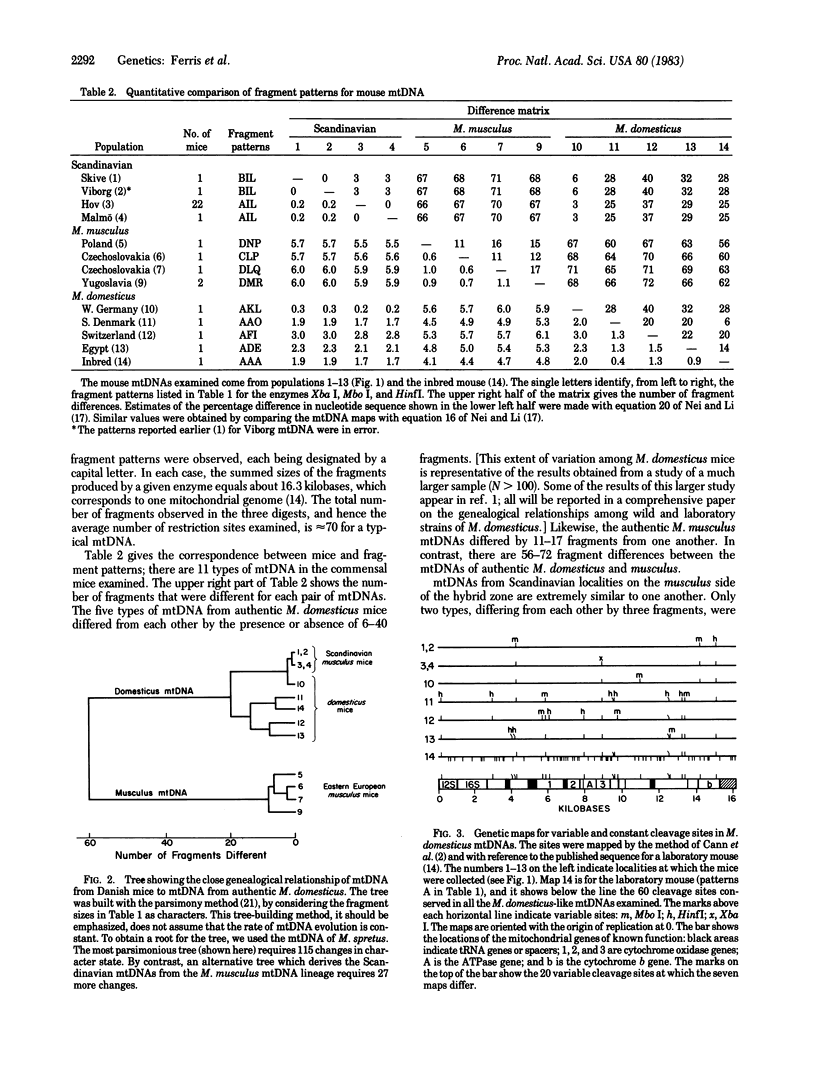
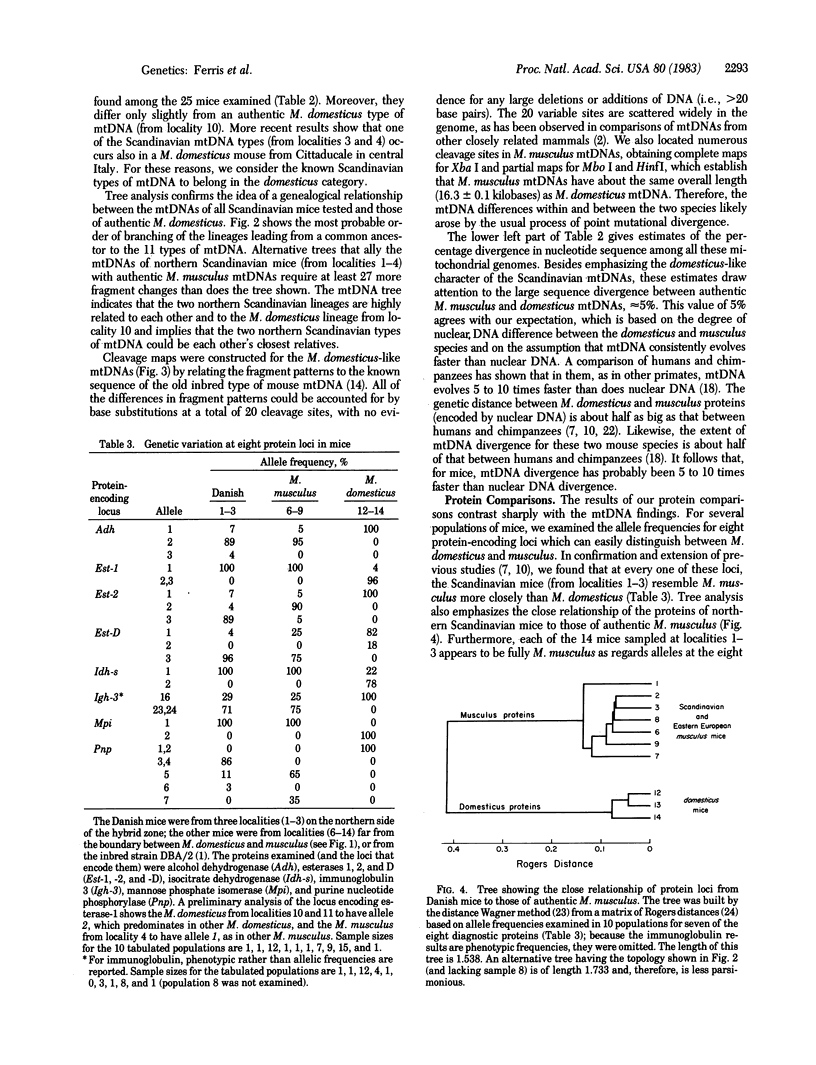
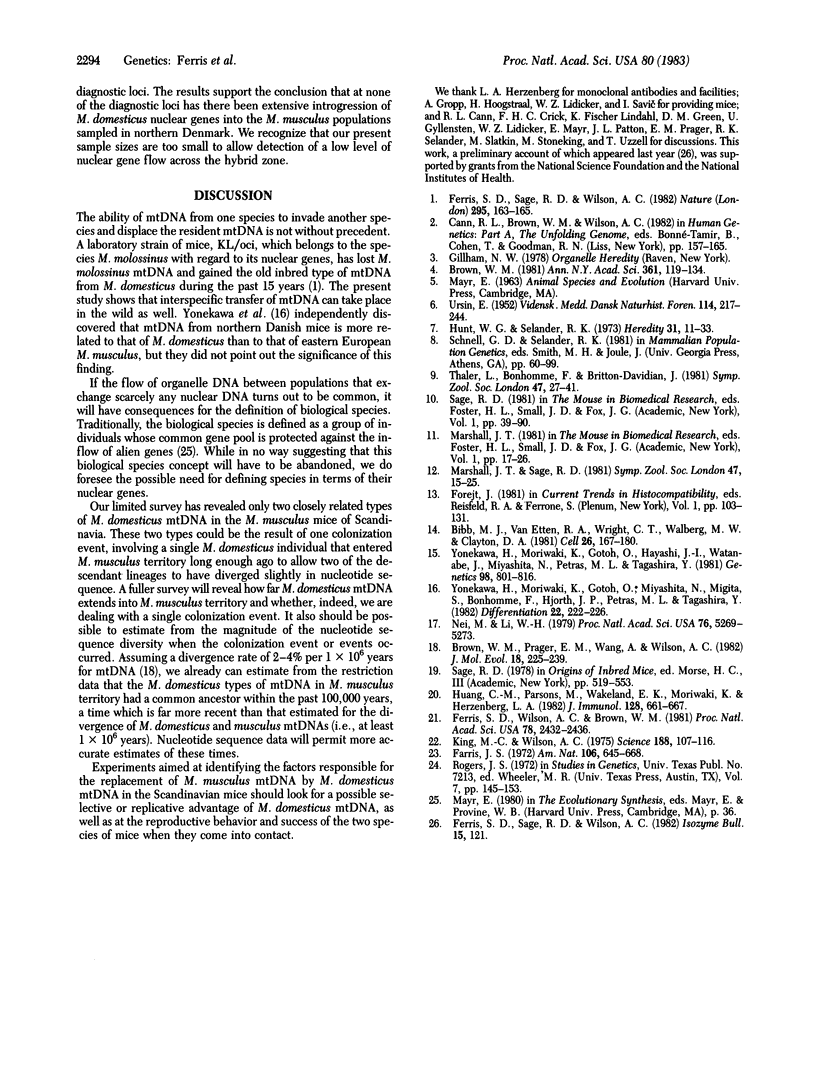
Selected References
These references are in PubMed. This may not be the complete list of references from this article.
- Bibb M. J., Van Etten R. A., Wright C. T., Walberg M. W., Clayton D. A. Sequence and gene organization of mouse mitochondrial DNA. Cell. 1981 Oct;26(2 Pt 2):167–180. doi: 10.1016/0092-8674(81)90300-7. [DOI] [PubMed] [Google Scholar]
- Brown W. M. Mechanisms of evolution in animal mitochondrial DNA. Ann N Y Acad Sci. 1981;361:119–134. doi: 10.1111/j.1749-6632.1981.tb46515.x. [DOI] [PubMed] [Google Scholar]
- Brown W. M., Prager E. M., Wang A., Wilson A. C. Mitochondrial DNA sequences of primates: tempo and mode of evolution. J Mol Evol. 1982;18(4):225–239. doi: 10.1007/BF01734101. [DOI] [PubMed] [Google Scholar]
- Ferris S. D., Sage R. D., Wilson A. C. Evidence from mtDNA sequences that common laboratory strains of inbred mice are descended from a single female. Nature. 1982 Jan 14;295(5845):163–165. doi: 10.1038/295163a0. [DOI] [PubMed] [Google Scholar]
- Ferris S. D., Wilson A. C., Brown W. M. Evolutionary tree for apes and humans based on cleavage maps of mitochondrial DNA. Proc Natl Acad Sci U S A. 1981 Apr;78(4):2432–2436. doi: 10.1073/pnas.78.4.2432. [DOI] [PMC free article] [PubMed] [Google Scholar]
- Huang C. M., Parsons M., Wakeland E. K., Moriwaki K., Herzenberg L. A. New immunoglobulin IgG allotypes and haplotypes found in wild mice with monoclonal anti-allotope antibodies. J Immunol. 1982 Feb;128(2):661–667. [PubMed] [Google Scholar]
- Hunt W. G., Selander R. K. Biochemical genetics of hybridisation in European house mice. Heredity (Edinb) 1973 Aug;31(1):11–33. doi: 10.1038/hdy.1973.56. [DOI] [PubMed] [Google Scholar]
- King M. C., Wilson A. C. Evolution at two levels in humans and chimpanzees. Science. 1975 Apr 11;188(4184):107–116. doi: 10.1126/science.1090005. [DOI] [PubMed] [Google Scholar]
- Nei M., Li W. H. Mathematical model for studying genetic variation in terms of restriction endonucleases. Proc Natl Acad Sci U S A. 1979 Oct;76(10):5269–5273. doi: 10.1073/pnas.76.10.5269. [DOI] [PMC free article] [PubMed] [Google Scholar]
- Yonekawa H., Moriwaki K., Gotoh O., Hayashi J. I., Watanabe J., Miyashita N., Petras M. L., Tagashira Y. Evolutionary relationships among five subspecies of Mus musculus based on restriction enzyme cleavage patterns of mitochondrial DNA. Genetics. 1981 Aug;98(4):801–816. doi: 10.1093/genetics/98.4.801. [DOI] [PMC free article] [PubMed] [Google Scholar]
- Yonekawa H., Moriwaki K., Gotoh O., Miyashita N., Migita S., Bonhomme F., Hjorth J. P., Petras M. L., Tagashira Y. Origins of laboratory mice deduced from restriction patterns of mitochondrial DNA. Differentiation. 1982;22(3):222–226. doi: 10.1111/j.1432-0436.1982.tb01255.x. [DOI] [PubMed] [Google Scholar]


